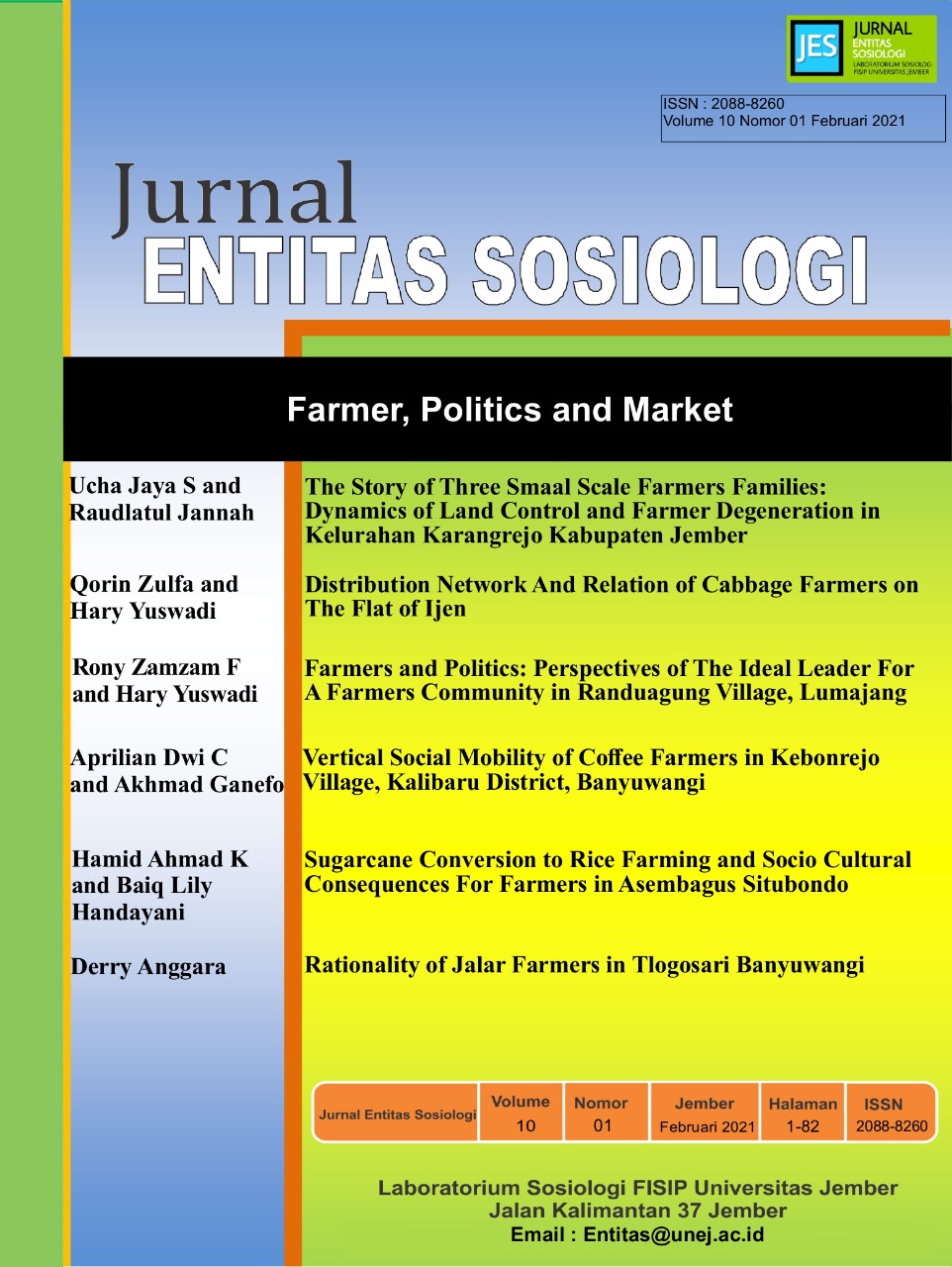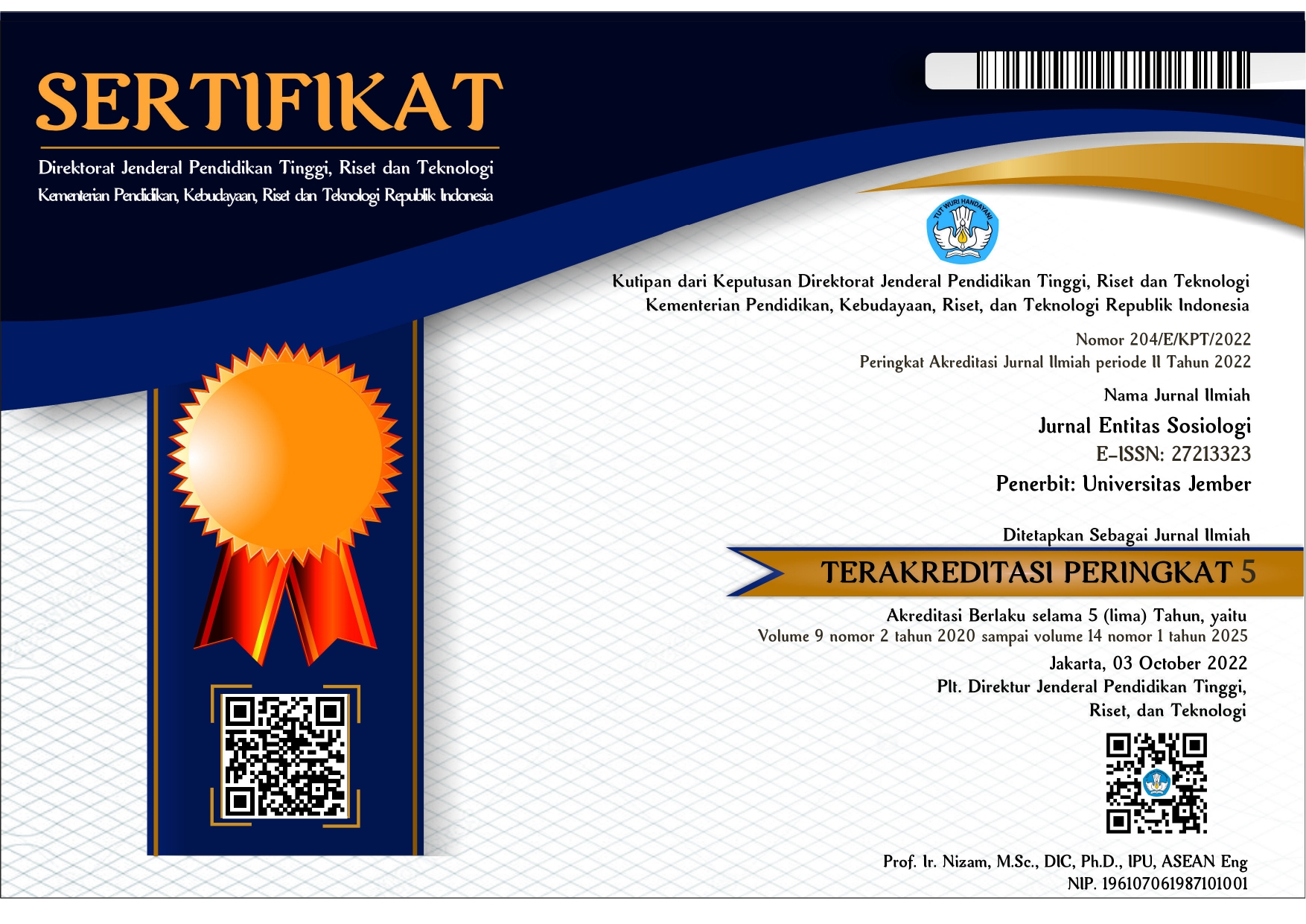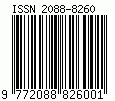Konsekuensi Sosio Kultural dalam Konversi Komoditas Pertanian Tebu pada Pertanian Padi di Desa Asembagus Situbondo
Abstract
This research was conducted departing from a phenomenon of commodity conversion by rice farmers in Asembagus Situbondo, which began to occur in the early 1980s. This conversion practice is motivated by two factors: the factor of sulfur contamination and the optimization of the sugar industry launched by the New Order government. The contamination of irrigation that flowed through the farmers' fields was caused by the cracking of the sulfur retaining dam on the top of Mount Ijen. Sulfur water seepage then flows into the Banyupahit river which is a source of irrigation for farmers in Asembagus. And at almost the same time there was a government policy related to the sugar industry by issuing the sugar cane intensification (TRI) program. This study aims to analyze and describe the practice of the conversion of commodity farmers from rice farmers to sugar cane farmers. This study used descriptive qualitative method. The theory used in this research is Pierre Bourdieu's Practice Theory. The results of this study include changes in sociocultural farmers which include the loss of farmers' legitimacy of their land and commodities, the loss of grain function as saving, the loss of front actors, cooks, and tractor owners. In addition, there is dominance carried out by actors who have high capital over actors who have low capital. The practice then constructs a dominant discourse (Doxa) in the Asembagus farming community.
Keywords : Farmers, Agricultural Commodities, Practices, Doxa
Penelitian ini dilakukan berangkat dari sebuah fenomena yaitu fenomena konversi komoditas yang dilakukan petani padi di Asembagus Situbondo yang mulai terjadi di awal tahun 1980-an. Praktik konversi tersebut dilatarbelakangi oleh dua faktor, yakni faktor tercemarnya irigasi oleh belerang dan adanya optimalisasi industri gula yang dicanangkan oleh pemerintah Orba. Tercemarnya irigasi yang mengaliri sawah petani disebabkan oleh retaknya bendungan penahan belerang yang berada di puncak Gunung Ijen. Rembesan air belerang kemudian mengalir ke sungai Banyupahit yang merupakan sumber irigasi bagi petani di Asembagus. Dan disaat yang hampir bersamaan terdapat kebijakan pemerintah terkait industri gula dengan menerbitkan program tebu rakyat intensifikasi (TRI). Penelitian ini bertujuan untuk menganalisis dan mendeskripsikan terjadinya praktik konversi komoditas petani dari petani padi ke petani tebu. Penelitian ini menggunakan metode deskriptif kualitatif.
Kata Kunci: Petani, Komoditas Pertanian, Praktik, Doxa
References
Fasihri, F. (2014). Pierre Bourdieu: Menyingkap Kuasa Simbol. Yogyakarta: Jalasutra.
Hamid, E. S. (1994). Beberapa Permasalahan Tebu Rakyat Intensifikasi dan Industri Gula Indonesia. Economic Journal of Emerging Markets, 59-67.
Harker, R. (1990). (Habitus x Modal + Ranah = Praktik). Yogyakarta: Jalasutra.
Jenkins, R. (2004). Membaca Pikiran Perre Bourdieu. Bantul: Kreasi Wacana.
Karnanta, Kukuh. (2013). Paradigma Teori Arena Produksi Kultural Sastra: Kajian terhadap Pemikiran Pierre Bourdieu. Jurnal Poelitika, 1(1).
Ningtyas, E. (2015). Pierre Bourdieu, Language And Symbolic Power. Jurnal Poetika Pasca Sarjana UGM, 154-157











